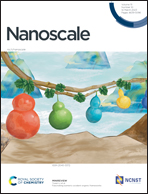Nonuniform-to-uniform structural transitions induced by ultrasonic vibrations†
Abstract
Recent millimetre-scale studies proposed that ultrasonic vibrations (UVs) promote material flow in welding joints via acting on dislocations. Here, we report atomic-scale results from molecular dynamics simulations of Mg–Al nanolayers joined by two means: only heat and heat accompanied by UVs (vibration amplitude, B = 0.1–10 nm and vibration frequency, f = 5.7–100 GHz) over the temperature range of 600–800 K. Comparative and quantitative analyses were performed on the structural evolution (including atomic diffusion, arrangements and distributions) of the joining Mg/Al interfaces and motions of dislocations, as well as on the influences of the vibration amplitude and vibration frequency on these two features. The results show that the applied UV with large vibration amplitudes (B ≥ 5 nm) and a low vibration frequency (f = 5.7 GHz) significantly facilitates atomic diffusion (10–1000 times as fast as that in the case free of UVs) and formations and motions of dislocations, resulting in nonuniform-to-uniform structural transitions and increases in the thicknesses of the joined Mg/Al interfaces. These results provide a way to understand how the applied UV acts on dislocations and atomic diffusion during the UV-assisted welding processes of Mg–Al and other systems.



 Please wait while we load your content...
Please wait while we load your content...